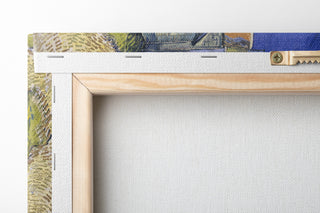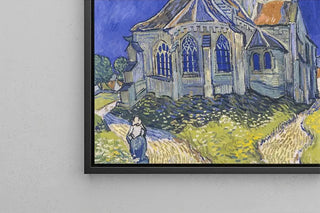Art print Conception for an Athenian villa, elevation of the façade - Edward Jones


View from behind

Frame (optional)
Conception for an Athenian villa, facade elevation: an architectural dream
The "Conception for an Athenian villa, facade elevation" by Edward Jones is a work that evokes the grandeur and elegance of classical architecture. This canvas features a majestic facade, adorned with columns and sculpted details, reminiscent of ancient temples. The soft colors and delicate shadows create an atmosphere of serenity and refinement. The artist employs perspective techniques to give a sense of depth, making this piece a true homage to the harmony of proportions and the timeless beauty of Greek architecture. Each element of the composition seems to tell a story, inviting the viewer to imagine the life that could unfold there.
Edward Jones: a visionary architect of the 19th century
Edward Jones, active in the 19th century, is recognized for his contributions to architecture and urban planning. Influenced by neoclassicism, he mastered blending tradition and innovation in his projects. His work on villa designs and public buildings demonstrates a constant pursuit of aesthetics and functionality. Jones was also involved in restoration projects of historic monuments, reflecting his respect for architectural heritage. His vision left a mark on his era and continues to inspire contemporary architects, making him an emblematic figure in the history of architecture.
A decorative acquisition with multiple assets
The art print "Conception for an Athenian villa, facade elevation" is a decorative piece that will add a touch of sophistication to your interior. Whether in an office, living room, or entrance hall, this canvas will captivate your guests' attention. Its faithful print quality and refined aesthetic make it an ideal choice for those who appreciate art and architecture. By integrating this artwork into your space, you create an elegant and inspiring atmosphere, while paying tribute to classical architectural heritage. This piece is not only a decorative addition but also an invitation to contemplation and escapism to bygone eras.

Matte finish

View from behind

Frame (optional)
Conception for an Athenian villa, facade elevation: an architectural dream
The "Conception for an Athenian villa, facade elevation" by Edward Jones is a work that evokes the grandeur and elegance of classical architecture. This canvas features a majestic facade, adorned with columns and sculpted details, reminiscent of ancient temples. The soft colors and delicate shadows create an atmosphere of serenity and refinement. The artist employs perspective techniques to give a sense of depth, making this piece a true homage to the harmony of proportions and the timeless beauty of Greek architecture. Each element of the composition seems to tell a story, inviting the viewer to imagine the life that could unfold there.
Edward Jones: a visionary architect of the 19th century
Edward Jones, active in the 19th century, is recognized for his contributions to architecture and urban planning. Influenced by neoclassicism, he mastered blending tradition and innovation in his projects. His work on villa designs and public buildings demonstrates a constant pursuit of aesthetics and functionality. Jones was also involved in restoration projects of historic monuments, reflecting his respect for architectural heritage. His vision left a mark on his era and continues to inspire contemporary architects, making him an emblematic figure in the history of architecture.
A decorative acquisition with multiple assets
The art print "Conception for an Athenian villa, facade elevation" is a decorative piece that will add a touch of sophistication to your interior. Whether in an office, living room, or entrance hall, this canvas will captivate your guests' attention. Its faithful print quality and refined aesthetic make it an ideal choice for those who appreciate art and architecture. By integrating this artwork into your space, you create an elegant and inspiring atmosphere, while paying tribute to classical architectural heritage. This piece is not only a decorative addition but also an invitation to contemplation and escapism to bygone eras.






